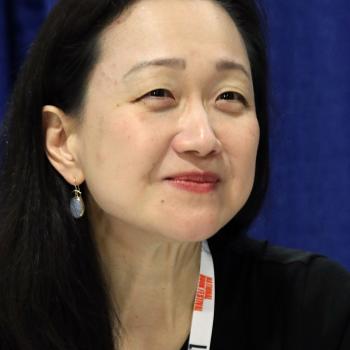While arguments run hot about removing to Confederate monuments from parks and courthouse squares, a monument to antislavery lies unwanted in a storage locker.
The childhood home of the “little woman who wrote the book that started this great war,” as Abraham Lincoln is reputed to have described Harriet Beecher Stowe, has been deconstructed and placed in storage lockers. It was sold for $1 in 1997. Buyers hoped to restore the building for historical significance but were unable. Earlier this month it went for sale on eBay. The listing ended with no bids, though it has been relisted.

Charlottesville’s upheaval has raised hard questions about the nature of commemoration, the way a community interprets its past. A monument marks a person, place, or event, but also marks the motives of those who put it there in the first place, and also the cast of those who live in its shadow. A monument is a way of communicating materially that some thing mattered, to people likely to forget or reappraise. Reappraisal is legitimate. We might abominate what our ancestors elevated, esteem what they contemned. Or a mix of both, as most persons and events commemorated have darker sides. The controversy churns: remove monuments to Lee but not Jefferson, Stonewall Jackson but not Andrew Jackson–or all of them?
It is possible for historical memory to be too alert, keeping too lively the recollection of a medieval slaughter, or ever stoking an ancient hatred. But it seems to me that popular argument now about the meaning of monuments is made worse by the thinness of historical awareness. I can attest—through observation of the highly repetitive though culturally sensitive curricula my children have received in elementary through high schools—that most should leave high school familiar with quite a bit of that history. Nevertheless, passersby not seldom encounter monuments as though meeting that history through them for the first time: “I had no idea this even happened.” This is one reason monuments matter. They can sustain rich, nuanced interpretation. But they also can telegraph a simplistic message. This thing happened, this person was. The message of a monument, minus thick textual swaddling on placards that few read, seems too prone to be received in simple form. Shorthand, soundbite, tweet format tells us that this guy was a hero, that one was a hater.
We could use another complex monument. The house where Harriet Beecher Stowe grew up seems like it would have potential to spare for good interpretation, sound commemoration. Stowe’s novel Uncle Tom’s Cabin may not actually have caused the Civil War, but did portray the evils of slavery movingly to readers who may not have gotten the point quite that way before. The house deserves an appropriate buyer. Harriet Beecher Stowe was just one of the famous persons resident in that house, arguably not even the most important. (Pete Seeger lived in the house later on, but no one seems ready to restore on that account.) Her family, starting with her father Lyman, sprawls across the religious and cultural history of the nineteenth century. Lyman Beecher lived through the disestablishment of New England churches and campaigned for reforms of many stripes, anti-dueling, temperance, and religious revival, along with strong taint of anti-Catholicism. Called “the father of more brains than any other man in America,” Lyman raised a brood of preachers and writers. Harriet’s brother Henry Ward Beecher became, for a while, the “most famous man in America,” with his antislavery appeals, fervent preaching, and celebrity status. Another brother, Charles, was tried for heresy during the Civil War, in part on account of his antislavery sentiments, and journeyed to Florida after the war to promote education for freedmen. Harriet’s sister Catherine, a kind of Martha Stewart colossus of her time, promoted girls’ education and modern household management but opposed suffrage for women, which another sister, Isabella, advocated. Plenty of influential persons came from inside that house.
But its significance comes not only from the people formerly inside but its location. The house was built in Litchfield, Connecticut in 1774 and occupied by the Beechers in 1810. Litchfield, a place so orderly and scenic as to be nearly a self-parody of the New England Town, boasts a green common, white church with steeple, and tasteful cafes. Like many other small towns, it makes big claims about its historical significance. Litchfield, though, does have plenty of claim to significance. It hosted the Beechers. Some of the Beechers attended a local school for young women run by Sarah Pierce. Pierce’s school, The Litchfield Female Academy was a leading venue for female education in a period abuzz with experiment and argument over female education–what should it teach? what was it for?—and this school earned high respect for its curriculum and management. Down the street sits the first law school in the United States, founded by Tapping Reeve (1744-1823). Reeve taught law to young men, first in his home and then in an outbuilding constructed for that purpose. Reeve’s was the first educational institution dedicated to that purpose alone, and students kept coming. Dozens of future congressmen, senators, judges, and other political figures took their training from Reeve, who taught over a thousand students in his term, including Aaron Burr, Horace Mann, John C. Calhoun, and Daniel Webster.
In a period when we need to think hard about what kinds of historical monuments are worth keeping, something like the Beecher house, carefully restored and interpreted, could be a boon. It would be useful in helping observers connect local, particular history to the broader history of the region and nation. It would be useful in encouraging favorable recollection of some reform efforts we value, like antislavery, but also education, religious reorganization, and women’s roles. Furthermore, as the Beechers were not without their oddities, errors, and even scandals, any monument to them must entail complexity, of their own and of historical memory itself. The lessons that a Beecher house might have to teach would not be communicated in a quick pass by. But probably that is true of most monuments.
Some monuments should be put into storage. Others should be taken out.













